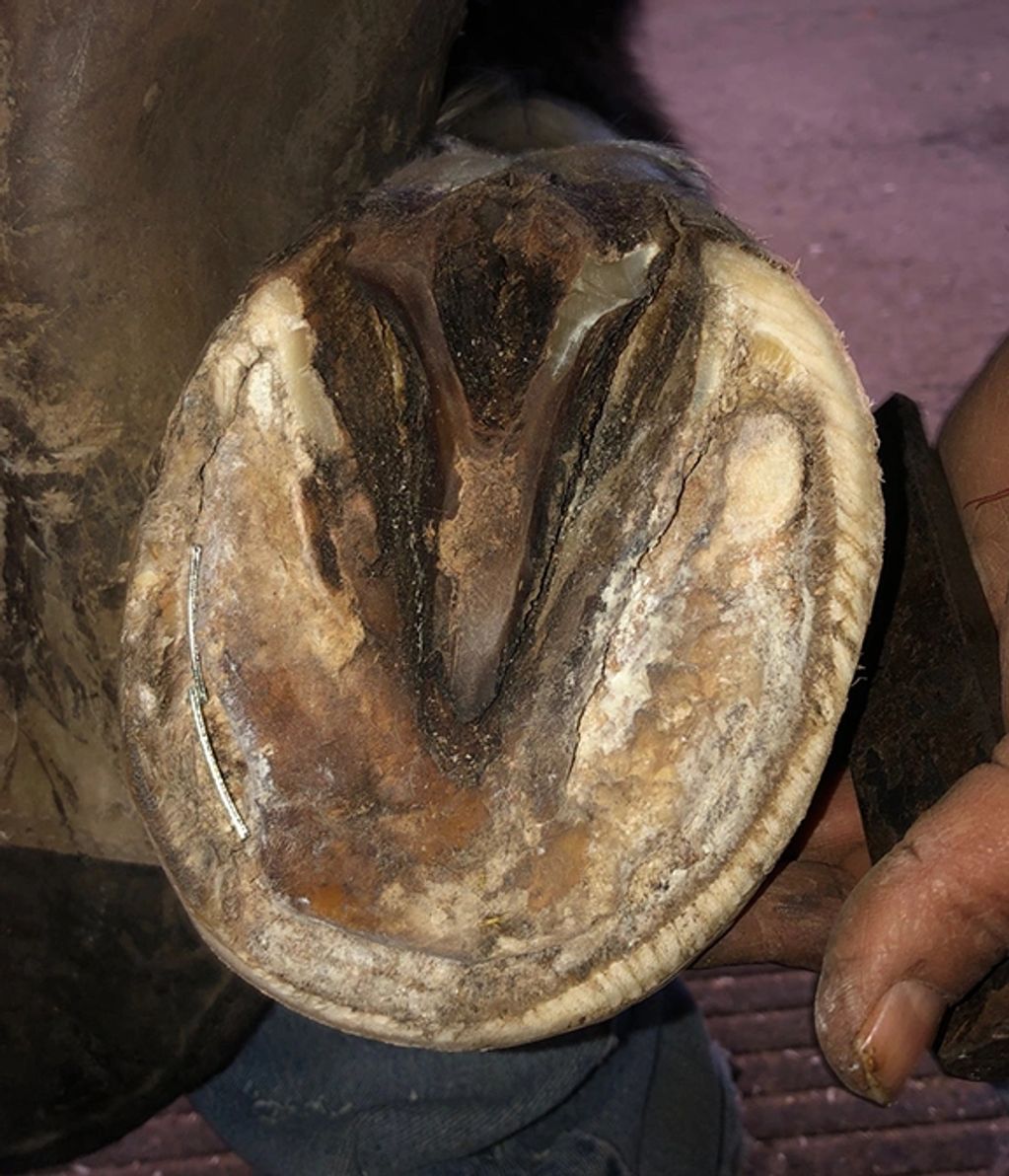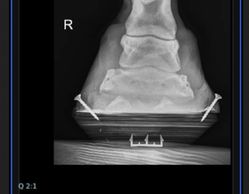Signed in as:
filler@godaddy.com
Signed in as:
filler@godaddy.com
Dave Gilliam has been a professional farrier for over 20 years, and works throughout the United States, but is based in Florida. Dave’s focus is primarily Hunters and Jumpers, and lameness. Early in his career, Dave developed an interest in lameness and sport horses, and has since continued his education and now has a strong focus on lameness and sport horses. Dave recently graduated from the Royal Veterinary College's Equine Locomotor Research program, a prestigious graduate-level course that concluded with a scientific research project and thesis. He is also the founder and president of Equine Soundness Professionals, an organization for veterinarians and farriers that focus on lower limb lameness.
D.E. Hoof Taps have proven to be quite useful tools for many of the hoof maladies and structural defects that we commonly see. I most often apply the hoof taps in cases of white line disease (pretty common in southern Florida!) and hoof cracks. The taps having an anti-bacterial surface is an important feature, and clients love that they can be applied under any type of shoe. Hoof taps are simple to apply, and I have gotten visible results that both the client and I can easily see.


Dave Gilliam, owner of EquiSport Hoof Care, specializes in performance sport horses and podiatry/lameness cases. Founder of “American Association of Equine Soundness Professionals”
Dave Gilliam was 1 of 15 farriers accepted into the 2018 Royal Veterinary College Equine Locomotor and Research Program.
Dave uses DE HoofTaps for different issues in his hoof care practice.

“I have been applying the DE HoofTaps and see the benefits of their use. I plan to utilize them in other corrective hoof issues.”
Travis Burns, CJF, TE, EE, FWCF

"I was actually very surprised to see how tight the white line became after having the taps in the feet. I wasn't expecting his feet to come around so quickly."
Dr. Alex Ciuffitelli, VDM


Horse is at five weeks out in it’s shoeing cycle. He is normally done every six weeks. When he goes outside, he walks through mud everyday, also spends the day going up and down rocky hills and takes a dip in the pond. He stays out all day. When he comes into the barn he walks down a concrete aisle to his stall. In this application, DE HoofTaps were used with FormaHoof.



Dr. Debra Taylor, using DE HoofTaps for wall separation.


DE HoofTaps put into stabilize hoof wall.

DE HoofTaps put in to stabilize hoof wall.

Older school horse grows straight up and down. As you can see, his pasterns reflect that. Dish on right front. Always has been hard on his feet. Five week shoeing cycle with DE HoofTaps. Doing great, very sound.

Got to use some hoof taps from Doug Ehrmann in
My wood shoes and trims this pics are from when I put them in I went back to trim and to my good Surprise cracks grew out good product Doug












- Andre Lebron of NY,
a professional farrier for over 30 years
Separation addressed at an early stage.
One cycle for this horse is seven weeks.
New Hooftaps can be applied if needed.












Horse came in horrible shape, overgrown, underweight, couldn't walk. He is still an ongoing project. He is doing much better, put on weight and bringing his feet back under himself in the front, and standing up in the back. When I started working on him, he couldn't hold one foot up for longer for a minute or so. The DE HoofTaps have helped him tremendously. We were so concerned with him we didn’t take any before pictures.



Five week cycle

Five week cycle
As you can see, horse is on his way to improving.








Another wood shoe applied to a laminitic yesterday, this time with a DE hoof tap in the toe to protect against wear and provide traction



DE HoofTaps in barefoot Horse

Older school horse with arthritis, barefoot behind, had excessive wear problem. We put in HoofTaps, image is at 5 weeks. As shown, there is plenty of growth. Apologies for not having the before image, cell phone was not handy.

Beccy Smith: I'm an equine podiatrist and owner at www.holisticreflections.co.uk I have found hoof taps invaluable for cracks, wall separation, for increased traction over perfect hoof wear and even prolonging wear of hoof wear. They're inexpensive and easy to use too. I find the videos and posts useful too so thank you D.E. HoofTaps!

I call this tool the Tap Setter, as explained in the directions. Here's how I made it.

Take an old clinch cutter and grind down the cutter side to approx. 1/16"

Simple tool when needed.